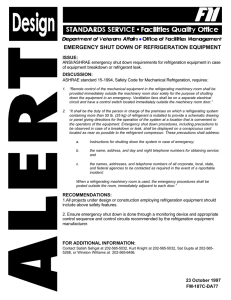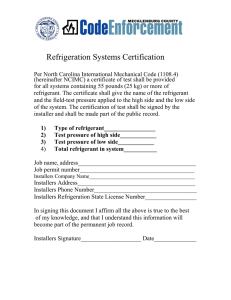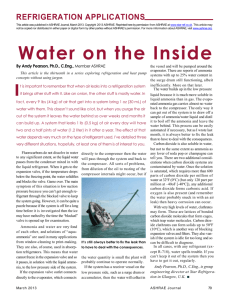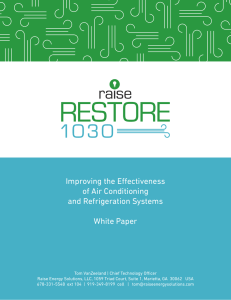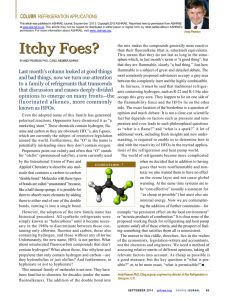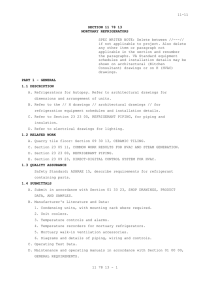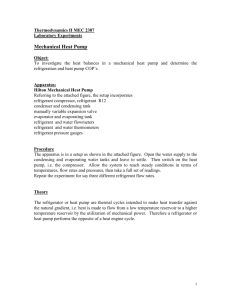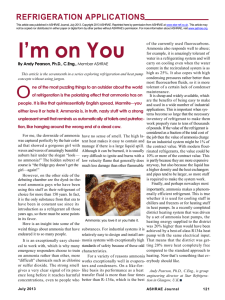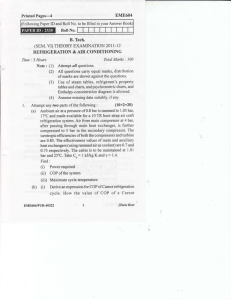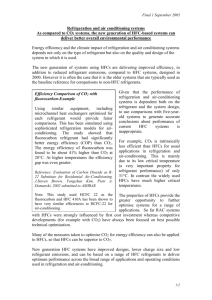Are You Pro Propane?
advertisement
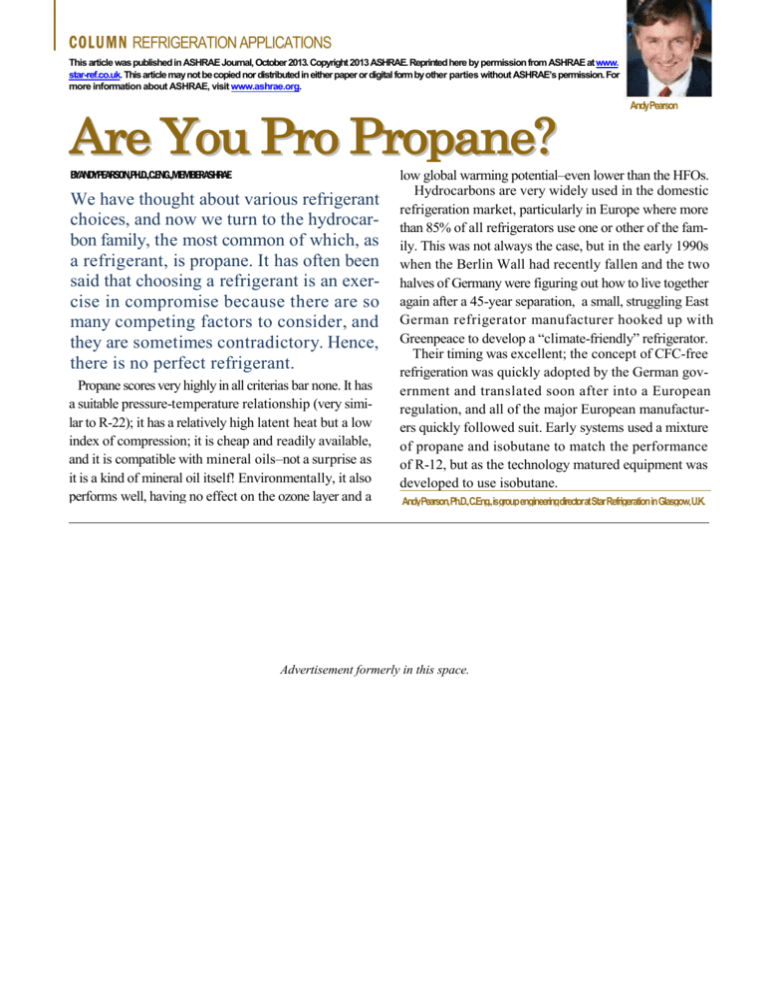
COLUMN REFRIGERATION APPLICATIONS This article was published in ASHRAE Journal, October 2013. Copyright 2013 ASHRAE. Reprinted here by permission from ASHRAE at www. star-ref.co.uk. This article may not be copied nor distributed in either paper or digital form by other parties without ASHRAE’s permission. For more information about ASHRAE, visit www.ashrae.org. Are You Pro Propane? BYANDYPEARSON,PH.D.,C.ENG.,MEMBERASHRAE We have thought about various refrigerant choices, and now we turn to the hydrocarbon family, the most common of which, as a refrigerant, is propane. It has often been said that choosing a refrigerant is an exercise in compromise because there are so many competing factors to consider, and they are sometimes contradictory. Hence, there is no perfect refrigerant. Propane scores very highly in all criterias bar none. It has a suitable pressure-temperature relationship (very similar to R-22); it has a relatively high latent heat but a low index of compression; it is cheap and readily available, and it is compatible with mineral oils–not a surprise as it is a kind of mineral oil itself! Environmentally, it also performs well, having no effect on the ozone layer and a AndyPearson low global warming potential–even lower than the HFOs. Hydrocarbons are very widely used in the domestic refrigeration market, particularly in Europe where more than 85% of all refrigerators use one or other of the family. This was not always the case, but in the early 1990s when the Berlin Wall had recently fallen and the two halves of Germany were figuring out how to live together again after a 45-year separation, a small, struggling East German refrigerator manufacturer hooked up with Greenpeace to develop a “climate-friendly” refrigerator. Their timing was excellent; the concept of CFC-free refrigeration was quickly adopted by the German government and translated soon after into a European regulation, and all of the major European manufacturers quickly followed suit. Early systems used a mixture of propane and isobutane to match the performance of R-12, but as the technology matured equipment was developed to use isobutane. AndyPearson,Ph.D.,C.Eng.,isgroup engineeringdirectoratStar Refrigeration in Glasgow,U.K. Advertisement formerly in this space. COLUMN REFRIGERATION APPLICATIONS Among the spin-off benefits of this change, it was noted to cope with the flammability of the refrigerant now being that units are significantly quieter on starting than tradiused, but the technology of the refrigerator did not change tional R-12 and R-134a systems and the weight of refrigerdramatically, and in the eye of the householder there was ant required is much less. The reduced noise is due to the no change at all. The fridge is installed and used in exactly absorption of refrigerant in the oil when the compressor the same way as it always was and there has been no disis not running, enabling a gentle start against lower prescernible change in product safety. sure. The reduced charge is due to the low liquid denThis highlights a key difficulty when introducing sity—the volume of liquid required is about the same but it hydrocarbons to an existing service organization. If a weighs less. They are also very efficient, helping manufactech is being introduced to CO2 as a refrigerant, he is natuturers meet the stringent energy labeling requirements. rally wary—the pressures are higher and the gear looks a The labeling laws introduced in bit different. However, his regular habits The motto from the walls of the energy efficiency office. Europe in the 1990s had a scale from G in terms of service practice will stand him (least efficient) to A (most efficient) but in good stead and not cause problems. On stepwise improvements in the requirethe contrary, a hydrocarbon system looks and feels much like a normal HFC system ments over the years have meant new, but regular habits, such as sweating off an more efficient bands have been added; A+, then A++ and then (you’ve guessed it) A+++. Since expansion valve, can cause major problems unless great mid-2012 all models must be at least A+ efficiency; it’s a care is taken to ensure the refrigerant is well out of the way. Propane has been adopted by a major UK supershame they didn’t start further back in the alphabet. market as its preferred solution for its display cases—for The transition from CFC to HC in the European refrigerthem the various benefits of cost, efficiency and reliabilator market was quick and relatively simple because all the ity outweigh the challenges they have had to overcome to hard stuff took place at the factory. Production lines had take this road to environment-friendly refrigeration.■ to be retooled and in some cases completely reengineered Advertisement formerly in this space.
